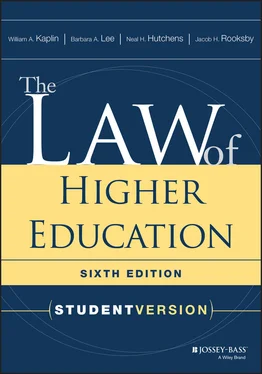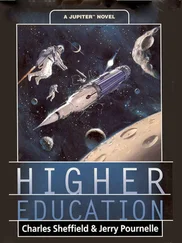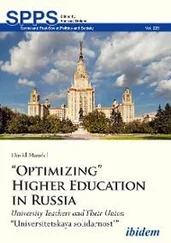If a cocurricular activity is not sponsored or supervised by the institution, it is unlikely that a court will find that the institution has a duty to protect the student from injury. Or if the student is pursuing private social activities that the institution has not undertaken to supervise or control, a court may find that no duty exists. In University of Denver v. Whitlock , 744 P.2d 54 (Colo. 1987), for example, the Supreme Court of Colorado reversed a $5.26 million judgment against the University of Denver for a student who became a quadriplegic as the result of a trampoline accident.
The accident in Whitlock occurred in the front yard of a fraternity house on the university campus. The university had leased the land to the fraternity. Whitlock asserted that the university had a duty, based on a “special relationship,” to make sure that the fraternity's trampoline was used only under supervised conditions. The special relationship, Whitlock asserted, arose either from his status as a student or the university's status as landowner and lessor to the fraternity. But the court held that the university's power to regulate student conduct on campus did not give rise to a duty to regulate student conduct or to monitor the conduct of every student on campus. Citing earlier cases in which no duty to supervise social activity was found (including Bradshaw v. Rawlings ), the court concluded that the university did not have a special relationship based merely on the fact that Whitlock was a student. Inspection of the lease between the university and the fraternity disclosed no right to direct or control the activities of the fraternity members, and the fire inspections and drills conducted by the university did not create a special relationship.
Similarly, in Guest v. Hansen , 603 F.3d 15 (2d Cir. 2010), a federal appellate court ruled that staff of Paul Smith's College (a private college) did not have a duty to protect a student or his guest from injuries sustained in a snowmobile accident. The college was located on a lake, which the college did not own. Students had a practice of building bonfires on the frozen lake and using it as a location for consuming alcohol. A student and his guest went for a snowmobile ride around the lake; the student's blood-alcohol content at the time was over 0.11 percent. The snowmobile crashed and the two were killed. The guest was 20 years old and not under the influence of alcohol at the time of the accident.
The guest's father sued Paul Smith's College and its director of residence life for negligence, stating that college administrators knew that students were consuming alcohol and partying on the frozen lake and neither attempted to stop the partying nor enforced the college's alcohol policy. The court affirmed the trial court's ruling that neither the college nor the director of residence life owed the decedents a duty of care because they were not on property controlled by the college. Even if the college had the ability to control the off-campus activities of its students and their guests, said the court, it had no obligation to do so.
If an institution sponsors an activity such as intercollegiate sports, however, a court may find that a “special relationship” exists beyond that owed to invitees or to the general public. For example, in Kleinknecht v. Gettysburg College , 989 F.2d 1360 (3d Cir. 1993), a federal appellate court applying Pennsylvania law held that a special relationship existed between a college and a student who collapsed as a result of cardiac arrest and died during lacrosse practice, and that because of this special relationship the college had a duty to provide treatment to the student in the event of such a medical emergency.
In determining whether a duty exists, a court will consider whether the harm that befell the individual was foreseeable. In Kleinknecht , the court noted that the specific event need not be foreseeable, but the risk of harm must be both foreseeable and unreasonable. In analyzing the standard of care required, the court noted that the potential for life-threatening injuries occurring during practice or an athletic event was clearly foreseeable and thus the college's failure to provide facilities for emergency medical attention was unreasonable.
Even when an institution attempts to prohibit or to control inherently dangerous activities in which its students participate, a court may find that it has a duty to those students. In Furek v. University of Delaware , 594 A.2d 506 (Del. 1991), the Supreme Court of Delaware ruled that the university's pervasive regulation of hazing during fraternity rush created a duty to protect students from injuries suffered as a result of that hazing. Furek, who had pledged the local chapter of Sigma Phi Epsilon, was seriously burned and permanently scarred when a fraternity member poured a lye-based liquid oven cleaner over his back and neck as part of a hazing ritual. After he withdrew from the university and lost his football scholarship, he sued the university and was awarded $30,000 by a jury, 93 percent of which was to be paid by the university and the remainder by the student who poured the liquid on Furek. 1
The university asserted on appeal that it had no duty to Furek. While agreeing that “the university's duty is a limited one,” the court was “not persuaded that none exists” (594 A.2d at 517). Rejecting the rationales of Bradshaw and its progeny, the court used a public policy argument to find that the university did have a duty:
It seems…reasonable to conclude that university supervision of potentially dangerous student activities is not fundamentally at odds with the nature of the parties' relationship, particularly if such supervision advances the health and safety of at least some students [594 A.2d at 518].
Although it refused to find a special duty based on the dangerous activities of fraternities and their members, the court held that:
Certain established principles of tort law provide a sufficient basis for the imposition of a duty on the [u]niversity to use reasonable care to protect resident students against the dangerous acts of third parties… [W]here there is direct university involvement in, and knowledge of, certain dangerous practices of its students, the university cannot abandon its residual duty of control [594 A.2d at 519–20].
The court determined that the university's own policy against hazing, and its repeated warnings to students against the hazards of hazing, “constituted an assumed duty” (594 A.2d at 520). Relying on Section 314A of the Restatement (Second) of Torts, the court determined that the “pervasive” regulation of hazing by the university amounted to an undertaking by the university to protect students from the dangers related to hazing and created a duty to do so.
Because the outcomes in cases involving injuries related to cocurricular or social events are particularly fact sensitive, it is difficult to formulate concrete suggestions for avoiding or limiting legal liability. The cases seem to turn on whether the court believes that the injury was foreseeable. For example, in Knoll v. Board of Regents of the University of Nebraska , the court refused to award summary judgment to a university when a student attempted to hold the university responsible for the injuries he sustained during hazing in a fraternity house, which, under university policy, was considered student housing controlled by the university. The court ruled that the kidnapping and hazing of a student by a fraternity known to have engaged in prior acts of hazing could have been foreseen by the university. A Louisiana court reacted similarly in Morrison v. Kappa Alpha Psi Fraternity , 738 So.2d 1105 (La. Ct. App. 1999).
On the other hand, a federal district court refused to find institutional liability for the death of a first-year student who fell from a cliff during a social event sponsored by a student organization. In Apfel v. Huddleston , 50 F. Supp. 2d 1129 (D. Utah 1999), the court reaffirmed the teachings of Beach and dismissed the complaint, stating that institutions generally will not be held liable for injuries that occur off campus and that are not part of the academic program. Particularly when the injury is alleged to have resulted, at least in part, from the intoxication of the injured student or other individual, the court will examine closely the degree to which the college supervised the social or cocurricular event (or had undertaken the responsibility to do so), the reasonableness of the injured individual's behavior, and the relationship between acts or omissions of the college and the subsequent injury. This is particularly true of litigation involving injuries that are a result of hazing related to fraternity or other social organizations.
Читать дальше












